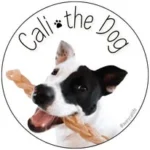There are a million different types, brands, size, flavors, and shapes of dog treats on the market. Every dog treat brand wants to convince you that they’re healthy. Are they healthy, though? What defines a healthy dog treat? What makes a dog treat more like a junk food? Do we want to risk making our dog fat, sick, or unhealthy?

Additives and Fillers Run Rampant in the Dog Industry
Dog treats have made significant progress over the years. Yet, many manufacturers still don’t produce high quality dog treats. Many are filled with processed foods, additives, dyes, sugars, preservatives, oils, fillers, and other unhealthy “ingredients”.
“The AAFCO Model Pet Food Regulations recognize the intended purpose of treat products and do not require that pet treats meet the nutritional adequacy requirements for a complete and balanced dog or cat food.” – AAFCO
These types of ingredients are used because they’re cheaper than higher quality ingredients. It’s up to the customer to be vigilant, reading the ingredients list, and even consider where those ingredients come from. I think we’re all aware of the crap that comes out of certain countries.
If dogs were in the wild, what would they eat?
I’m going to go a little off track here.
Dogs, evolved from wolves, are usually classified as Carnivorous, but they would also forage for herbs, roots, fruits and vegetables. Wolves, as a pack, often went after hoofed animals, who ate vegetation. When they ate any animal, they would consume the entire animal. This included any food left in the stomach of the animal.
History and science tell us a crucial fact. Wolves did not eat grains as part of their natural diet. Wolves would not have been capable of processing grains and converting them to energy. Over time and domestication, though, many dogs have evolved to eat and process grains (very interesting study).
Have all dogs evolved to eat grains?
There are, still, certain dog breeds that can’t eat grains successfully. Those closest to their wolf ancestors, the ancient breeds, still can’t properly process and digest grains. They have not had enough time to evolve enough to handle grains in their diet:
- Dingo
- Pug
- Siberian Husky
- Laika
- Greenland Sled Dog
On the other hand, we have the more recent dog breeds. These breeds are more capable of digesting grains, given their more domesticated DNA:
- English Springer Spaniel
- German Shepherd
- Rottweiler
- Border Collie
- Whippet
That’s up to you, but I would suggest considering your dog’s breed first. If you have a rescue like me, made up of many breeds, it’s important to test before going all in. Some dogs have very sensitive stomachs. There could also be an allergy or sensitivity you’re unaware of. It’s best to start slowly.
What makes a dog treat healthy?
The same things that make food healthy or unhealthy for a person. Whole foods are always better, although keep in mind that there are many human foods that are poisonous to dogs. The AKC is a great resource for learning what foods you should and shouldn’t feed your dog.
Making simple dog treats at home is a great way to reward you’re dog. Homemade treats are usually healthier, cheaper, and tastier than a lot of the dog treats on the market today. Beyond that, read the ingredients label closely, looking for mostly whole foods. If there’s anything in the list that is questionable, it might also be questionable for your dog to eat. Clean food is always the best food. It should only have a short list of whole foods. If there a bunch of additives, fillers, and preservatives, then it’s not a healthy dog treat. It’s a cheap one.
What are some of your favorite dog treats for your pup? Do you have a recipe to share? Does your dog have one they can’t live without and begs for daily? Let us know in the comments!




